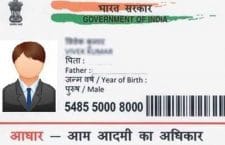Of all the reasons we love Chief Minister Yogi Adityanath, his ‘shagun kit’ has to be the best. Adityanath’s response to the central government’s Mission Parivar Vikas, which was to be launched on 11 July, World Population Day, was an announcement that newlyweds would be presented with a kit containing condoms, pills and other auspicious items (like nail cutters).
Five months later, to the day, on the 11 of December, the Information and Broadcast Ministry declared that condom ads wouldn’t get airplay between 10 am and 6 pm, deeming them unfit for children’s eyes. A few weeks later, combing the villages of Chitrakoot during sterilization season (winter is good for fast healing, necessary when you have one bed to three women in most sterilization camps), we came across a bunch of kids blowing condom balloons. We won’t say we didn’t chuckle at the irony.
As our 1.3 billion population rushes to overtake China’s, government programmes have zeroed in on providing access to birth control in 145 districts of the seven most-populated states. Uttar Pradesh is the highest contributor to the national population. As is well known, women are the cultural and policy-enforced bearers of the brunt of family planning efforts. Over years of reporting on sterilization camps, the narrative on sterilization in India hasn’t changed much, and statistics support this narrative. Female sterilisation accounts for 75 per cent of modern family planning methods used, according to the 2015-2016 National Health Survey. Male sterilization operations, although highly incentivized, are rare, as they are misconstrued to be debilitating: an impossible situation where men are misconstrued to be the main supporters of the family. Consequently, women, and the poorest, are targeted and incentivized (1400 bucks for a tubectomy, 100 bucks for a contraceptive shot!) to have often scarring, traumatic, and failed operations in terrible conditions. So what is the state of other, more harmless forms of contraception which men could get involved with, without stealing their main source of strength? In the build up to the year the latex condom turns 100, and the year that Yogi ji made the shuhaag raat hit national headlines, Khabar Lahariya follows the trail of condoms in rural Bundelkhand.
Interviewing health workers who are responsible for the distribution of condoms (and the shagun kit) in rural areas, it’s clear that the latex contraceptive isn’t seeing much traction. Kiran Devi, an ASHA worker in Karwi giggles coyly when asked if she uses condoms, and says this is a fad for the younger generation. ‘Men in these parts are scoundrels, and they just give the condoms to kids to play with. So now we don’t distribute them, we just give them to people who ask.’ Someone should let the Chief Medical Officer, Ramji Pandey, know about this; he says that the condoms are made freely available in public places (‘chauraha par’), so that even people who are shy of asking can access them. A very serious Kalpana, from Lalitpur says that the condom is something that is used when married women have their period, to prevent infections and such. She says she has no use for them, since her husband works outside the district, and anyway, when she has her period, they ‘have nothing to do with each other’.
Like all government schemes, Mission Parivaar Vikas is built on dovetailing, ‘convergence’ of existing rural health entitlements and infrastructure; and the catch phrase of creating an ‘enabling environment’ in order for the scheme to be effective. Clearly, the ASHA workers haven’t been given this brief. Maybe the anti-Romeos can be given an extension on their social welfare brief in order that Yogi ji’s orders reach the real last-mile beneficiaries of his shagun kit.


